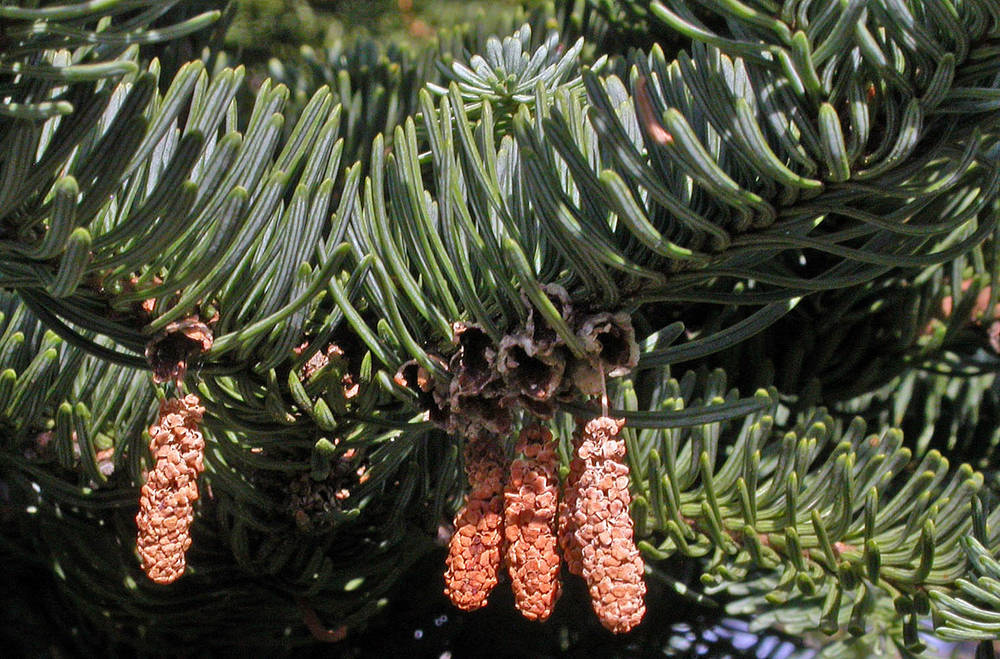Abies procera
noble fir
1-ranked, curving upward; flexible to sti?, 1–3.5 cm × 1.5–2 mm;
cross section 4-angled, occasionally weakly 4-angled;
abaxial surface bluish green, glaucous, with 2–4 whitish bands, 12–28 stomatal rows;
adaxial surface bluish green, glaucous, often with 2 whitish bands, 0–14 stomatal rows;
apex rounded to notched.
reddish.
11–13 × 2–4 mm, tan to brown;
wings slightly longer than body.
to 2.5 m in diameter;
bark gray; smooth when young, furrowed and reddish brown with age;
branches at right angles to trunk;
twigs opposite to whorled, pubescent for several years.
oblong-cylindrical, 10–15 cm long, purple to green;
scales pubescent;
bracts exserted and reflexed over scales, covering over 90% of cone at maturity.
=24.
Abies procera
Mid-elevation to subalpine forests. 300–2000 m. Casc, CR. CA, WA. Native.
Morphological and DNA evidence indicates that no pure Abies magnifica is likely to exist in Oregon. As a result, all previously described populations of A. magnifica are now assigned to A. magnifica × A. procera. Specimens of A. magnifica × A. procera can be distinguished from pure A. procera by seed cone and seed cone bract morphology.
Stephen Meyers
- Local floras:
CA,
OR,
WA
- Local Web sites:
CalFlora,
CalPhotos,
Flora NW,
PNW Herbaria
WildflowerSearch
iNaturalist (observations)
USDA Plants Database
- LBJ Wildflower Center
- SEINet
- Plants of the World Online
- Encyclopedia of Life
- Wikipedia
- Google Image Search



